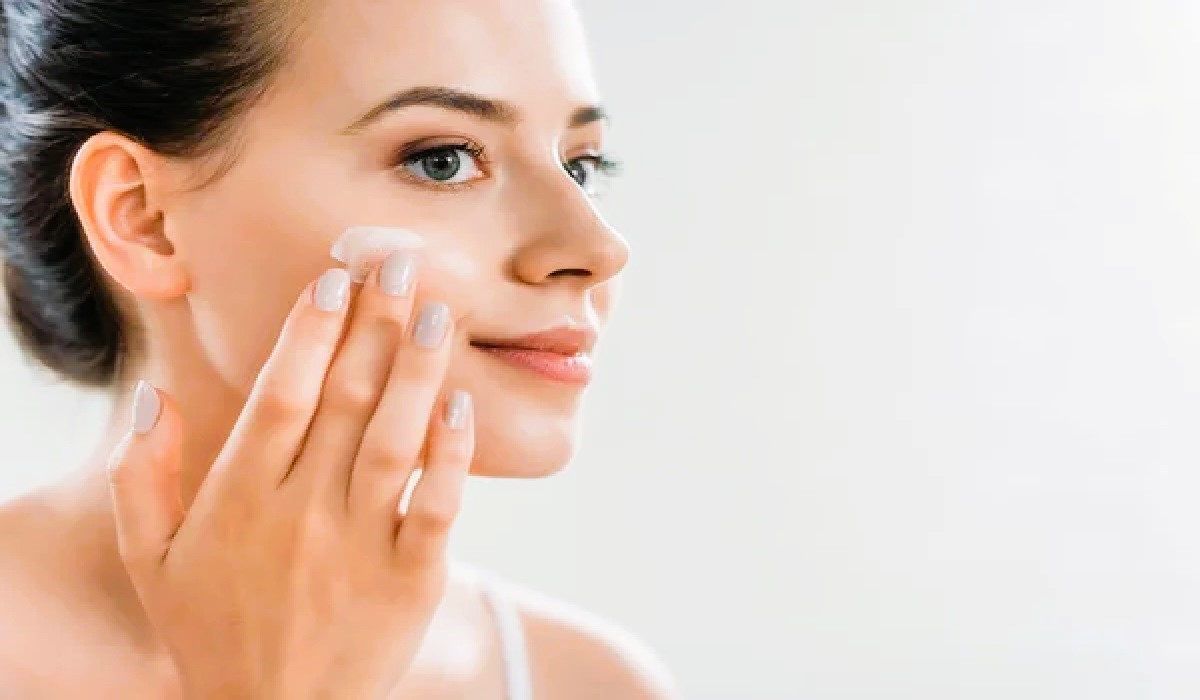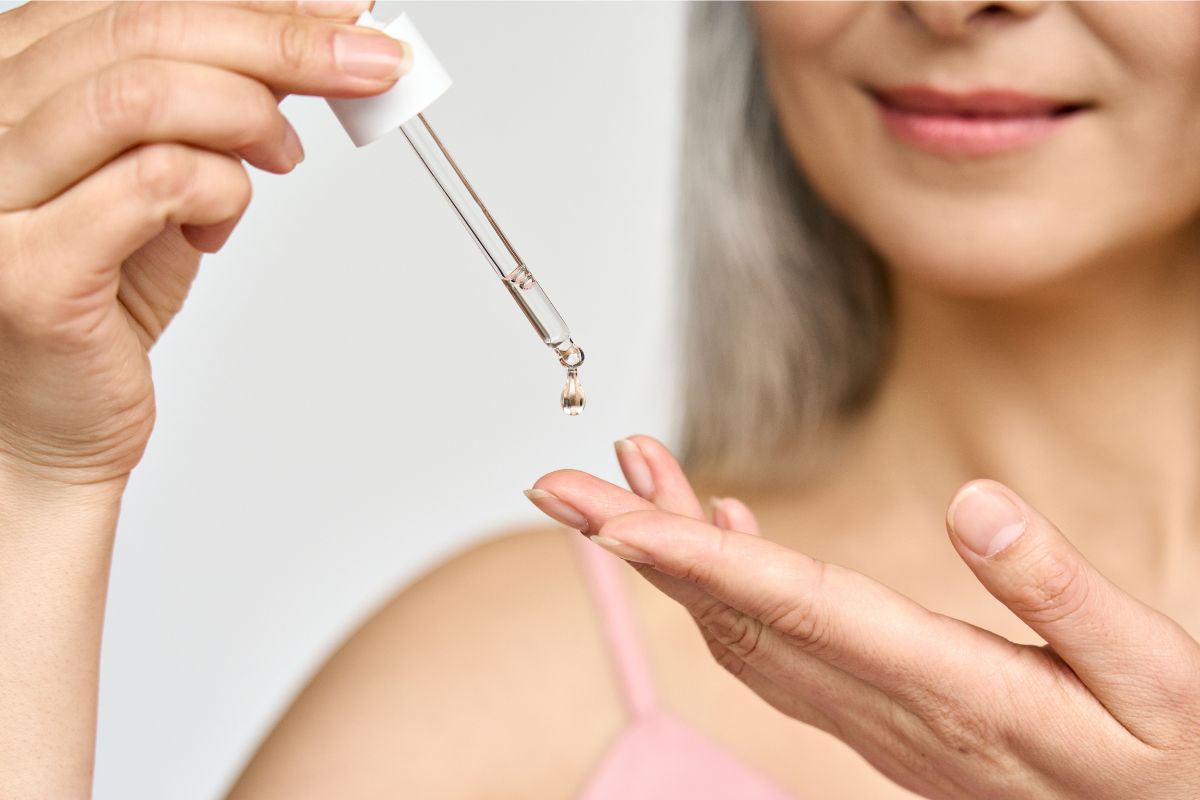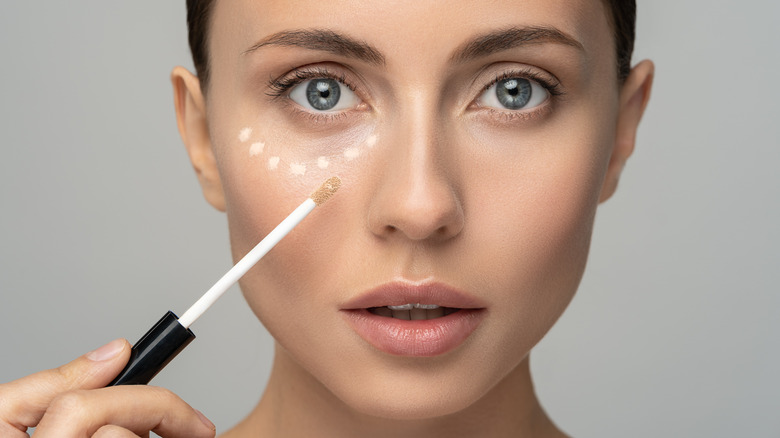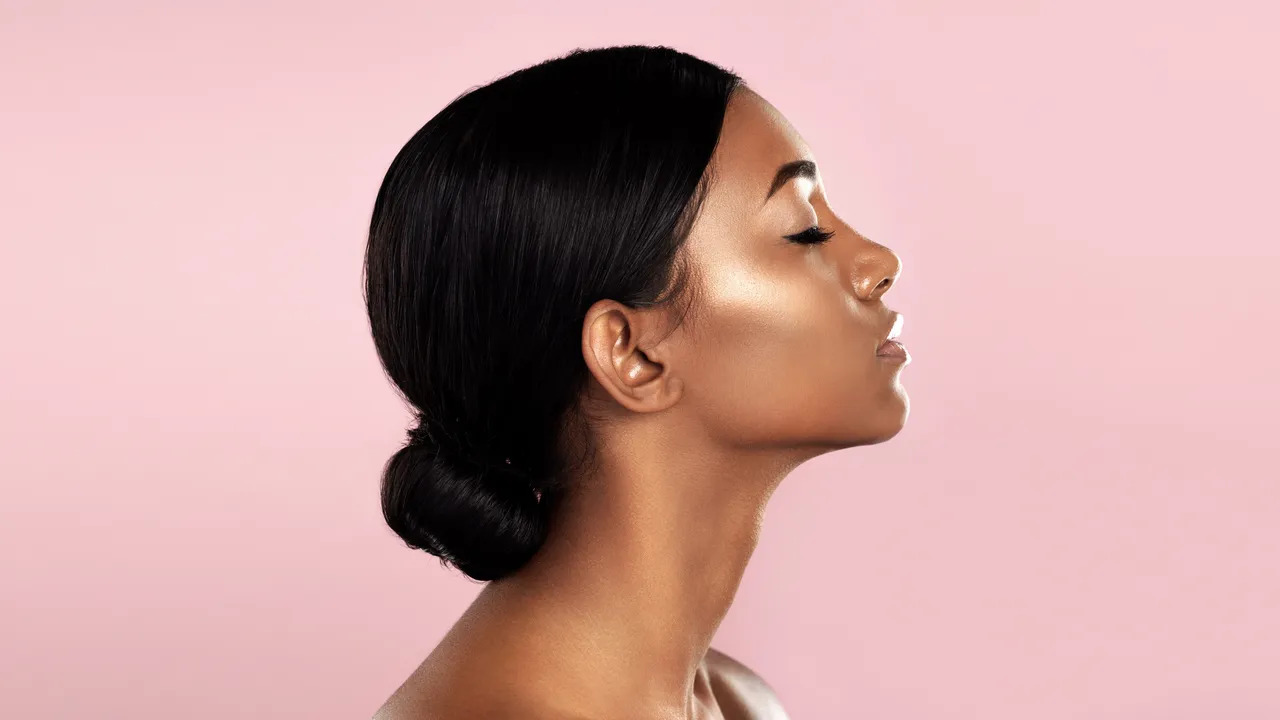Permanent eyeliner, also known as eyeliner tattoo, stands as a beacon of innovation in the cosmetic industry, offering a semi-permanent solution for those seeking to enhance their eye definition without the daily fuss of makeup application. This detailed guide aims to unfold the layers of permanent eyeliner, exploring its procedure, types, benefits, and vital considerations to arm you with knowledge and confidence in your beauty decisions.
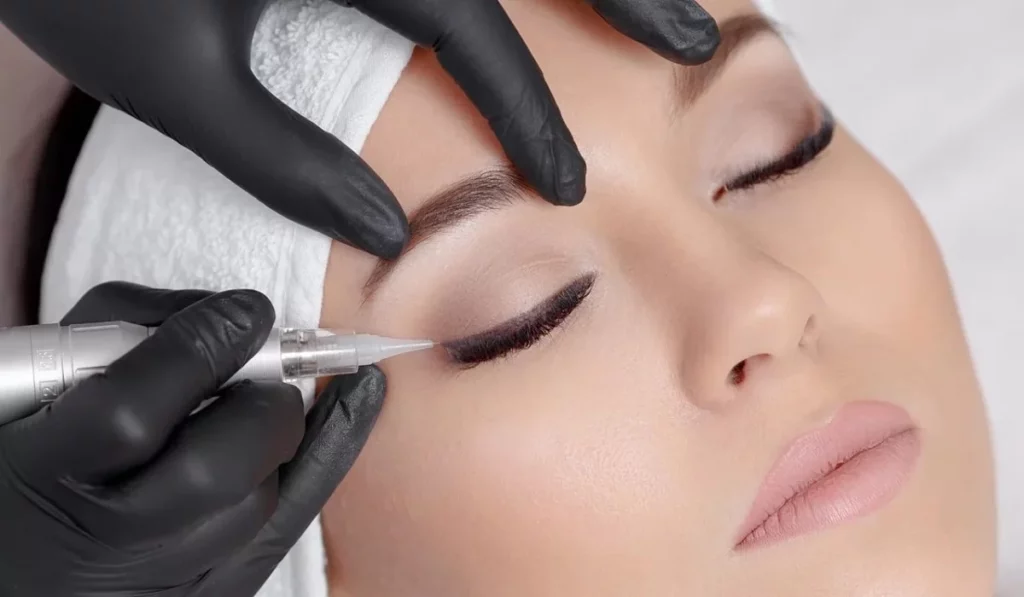
At its core, permanent eyeliner involves the meticulous insertion of pigment into the skin’s dermal layer around the eyes, mimicking the appearance of traditional eyeliner. This method, rooted in the practice of cosmetic tattooing, transcends the temporary nature of conventional makeup, providing a durable solution that withstands time, sweat, and tears. Beyond mere aesthetic enhancement, permanent eyeliner serves as a testament to the fusion of art and technology in the pursuit of lasting beauty.
The Procedure of Permanent Eyeliner
The journey to permanent eyeliner is marked by precision, expertise, and customization, tailored to fit each individual’s unique features and desires.
Pre-Procedure Preparation
The road to permanent eyeliner begins with a thorough consultation with a certified and experienced technician. This initial meeting is crucial for discussing expectations, choosing the right pigment color, and determining the most flattering eyeliner style. Clients are advised to refrain from consuming alcohol, caffeine, and blood-thinning medications several days before the procedure to minimize bleeding and swelling.
The Process
Adorned with gloves and using sterile equipment, the technician delicately implants the chosen pigment along the lash line with the aid of a fine needle. Comfort is a priority, hence topical anesthetics are applied to mitigate discomfort. The session may last anywhere from one to several hours, contingent upon the complexity of the desired look and the intricacies involved in achieving it.
Post-Procedure Care
The aftermath of the procedure is pivotal for the longevity and appearance of the eyeliner. Adhering to aftercare instructions is paramount, including keeping the area clean and dry, avoiding makeup and direct sun exposure, and applying prescribed ointments to facilitate healing and prevent infection.
Types of Permanent Eyeliner
Permanent eyeliner offers a spectrum of styles, from subtle to bold, each capable of accentuating the eyes in unique ways.
Lash Enhancement
This technique, ideal for those seeking a natural enhancement, involves depositing pigment between the lashes. The result is a fuller lash base that subtly defines the eyes without the overt appearance of makeup.
Traditional Eyeliner
Traditional eyeliner offers a more pronounced look, customizable in thickness to either softly define the eyes or create a more dramatic effect. It’s perfect for individuals who desire a visible eyeliner look that remains impeccably in place from dawn till dusk.
Winged and Designer Eyeliner
For the bold and adventurous, winged or designer eyeliner allows for creative expression, extending beyond the eyelids to include intricate designs or extended flicks. This option caters to those looking to make a statement with their eyes, offering endless possibilities for customization.
Benefits of Permanent Eyeliner
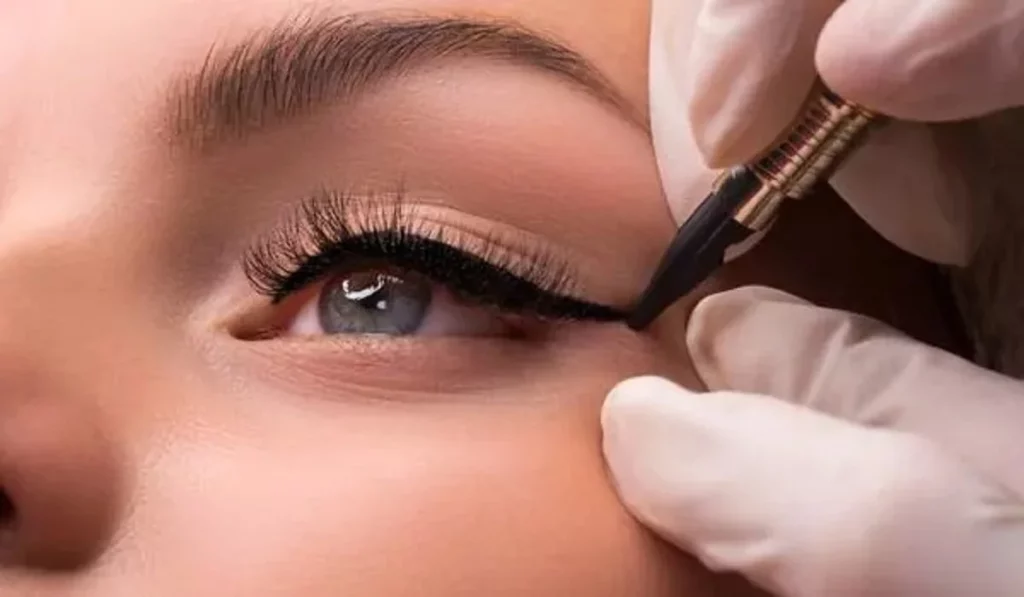
The allure of permanent eyeliner lies not only in its aesthetic appeal but also in the myriad of benefits it offers.
Time-saving and Convenience
It eradicates the daily need for eyeliner application, offering a liberating solution for those with hectic schedules or those who wish to wake up with perfectly defined eyes.
Smudge-proof and Long-lasting
Ideal for individuals with active lifestyles, oily skin, or sensitivities to traditional makeup, permanent eyeliner stays intact through sweat, swimming, and tears.
Enhances Eye Shape and Color
Tailored to each person, permanent eyeliner can accentuate the natural beauty of the eyes, enhancing their shape and making the eye color pop.
Risks and Considerations
While the benefits are compelling, it’s essential to acknowledge and understand the potential risks associated with permanent eyeliner.
Potential Side Effects
The procedure can result in temporary swelling, bruising, or redness. In rare cases, infection or allergic reactions to the pigment may occur, underscoring the importance of choosing a reputable technician who conducts patch tests.
Choosing the Right Technician
Research is paramount in selecting a technician. Look for someone with extensive experience, proper certification, and a portfolio of their work to ensure they align with your aesthetic preferences and safety standards.
Aftercare and Healing Process
The healing process is a critical phase where proper care can significantly impact the outcome and longevity of the eyeliner.
Immediate Aftercare
Following the technician’s aftercare instructions is crucial. This typically includes applying specific ointments, avoiding water and makeup around the eyes, and refraining from rubbing or touching the area to prevent infection and ensure optimal healing.
Long-term Care and Touch-ups
While permanent eyeliner is durable, it may gradually fade over time. Touch-up sessions every few years can maintain the vibrancy and definition of the eyeliner, keeping your eyes perpetually captivating.
What is Permanent Eyeliner?
Permanent eyeliner transcends the temporary nature of makeup, offering a lasting solution that embodies efficiency, beauty, and confidence. By opting for permanent eyeliner, you embrace a carefree beauty routine, ensuring you always present the best version of yourself to the world.
Permanent eyeliner represents a transformative beauty solution, blending artistry with innovation to bestow enduring elegance upon its recipients. As you contemplate embarking on this journey, remember that the key to a successful outcome lies in informed decision-making, meticulous research, and selecting a technician who aligns with your vision of beauty. Embrace the transformative power of permanent eyeliner and revel in the ease and confidence it brings to your daily life.
How long does permanent eyeliner last? Permanent eyeliner typically lasts between 1 to 3 years, depending on several factors including the quality of pigment used, the individual’s skin type, exposure to sunlight, and skincare routines. Over time, the pigment may fade, requiring touch-up sessions to maintain the desired intensity and sharpness of the eyeliner.
Is the procedure painful? The level of discomfort experienced during the permanent eyeliner procedure varies from person to person. Most technicians apply a topical anesthetic to numb the area before starting, significantly reducing pain. However, some individuals may still feel a slight stinging or scratching sensation. Discuss pain management options with your technician prior to the procedure to ensure comfort.
Can permanent eyeliner be removed? Yes, permanent eyeliner can be removed, but it is a complex process that should be undertaken by professionals. Laser treatment is the most common method for removing cosmetic tattoos, including permanent eyeliner. The process may require several sessions, depending on the depth and color of the pigment. It’s important to consult with a specialist to understand the risks and expected outcomes of removal.
What’s the difference between permanent eyeliner and a lash line enhancement? Permanent eyeliner and lash line enhancement are similar techniques that differ primarily in their visual effects. Lash line enhancement involves tattooing pigment directly into the lash line to create the appearance of thicker, fuller lashes without the visible line above the lashes that is characteristic of traditional eyeliner. Permanent eyeliner, on the other hand, creates a more defined line on the eyelid, which can vary in thickness and may extend beyond the lash line for various stylistic effects, such as a winged look.
How do I choose the right color and style for my permanent eyeliner? Choosing the right color and style for your permanent eyeliner depends on your natural eye color, skin tone, personal style, and the look you wish to achieve. Neutral, darker shades like black or brown are popular choices that complement most eye colors and skin tones, offering a natural and versatile look. Discussing your lifestyle, makeup routine, and preferences with your technician during the consultation will help in selecting the best style, whether you prefer a subtle lash line enhancement or a more dramatic eyeliner look.
What is the recovery time for permanent eyeliner? The recovery time for permanent eyeliner typically ranges from 7 to 10 days. Immediately after the procedure, you may experience swelling, redness, and a sensation similar to a sunburn around the treated area. These symptoms usually subside within a few days. It’s crucial to follow the aftercare instructions provided by your technician to ensure proper healing and to achieve the best results. This includes avoiding water and makeup near the eye area, not rubbing or touching the eyes, and applying any recommended ointments or treatments to help with healing.
Can I wear makeup after getting permanent eyeliner? It’s recommended to avoid applying makeup directly on or around the newly tattooed area for at least a week or until the healing process is complete. This precaution helps prevent infection and ensures that the pigment sets properly. After the area has fully healed, you can wear makeup as usual, but some individuals find that they rely less on traditional makeup thanks to the defining effects of permanent eyeliner.
How do I ensure my permanent eyeliner lasts as long as possible? To maximize the longevity of your permanent eyeliner, follow these tips:
- Avoid prolonged exposure to sunlight, as UV rays can fade the pigment. Wear sunglasses and consider using a gentle, non-irritating SPF around the eyes.
- Follow a gentle skincare routine that avoids harsh chemicals and exfoliants around the eyes.
- Keep the area moisturized with a safe, recommended product to support skin health.
- Attend touch-up appointments as recommended by your technician to refresh the color and definition of your eyeliner.
By understanding these aspects of permanent eyeliner, you can make an informed decision and ensure that your experience is positive, leading to beautiful and lasting results.

